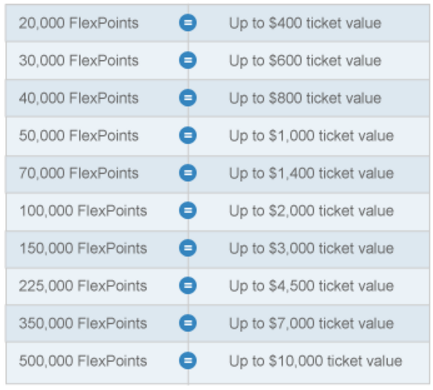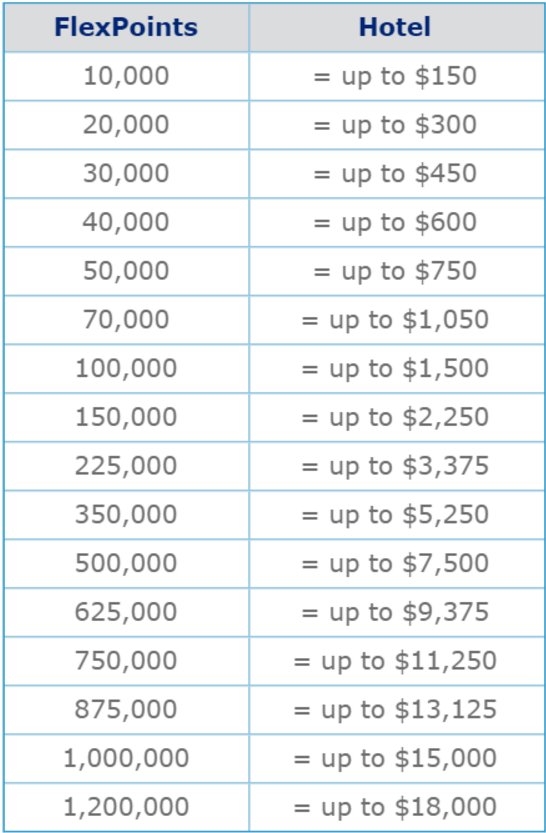There are so many different point currencies available, but many of the terms are used interchangeably. Last year when I asked readers what they would like to see covered, one reader asked about comparing different point and mile programs. There are many programs and this list is not going to include every single one of them. When it comes to miles vs points, which one reigns supreme?
Miles vs Mile vs Points vs Points
When it comes to different programs, there are some overlap which is always great for consumers. People can read about how great Ultimate Reward points are, but if you don’t use those airlines or hotel programs then the value is very limited. As programs change, I think it is important to put some effort into a few programs just to keep options open.
I’m not saying go crazy and open a million different accounts, but I think putting effort into flexible points allows the most flexibility (hence the name), with the exception of cash back. Unfortunately, the reality is cash back cards don’t have the large bonuses as point cards. I think cash back cards are becoming more valuable, but currently points and miles cards hold the advantage.
Types of Programs:
- Points:
- Ultimate Rewards
- Membership Rewards
- Thank You
- Specific Hotel
- FlexPerk points
- Miles:
- Venture Miles
- Arrival Miles
- Airline Specific
Ultimate Rewards
I would consider these to be the favorite of many people. They are extremely flexible, have great transfer partners, and with the right combination of cards you’ll earn points quite quickly.
Utilizing one of their transfer partners, it requires one of their premium cards. This will require paying an annual fee, but if you use these partners, the benefits usually outweigh the fees.
Ultimate Reward Points transfer to one of 11 partners:
- British Airways
- Southwest
- United Airlines
- Singapore Krisflyer
- Korean Skypass
- Flying Blue
- Virgin Altantic
- Hyatt
- IHG
- Marriott
- Ritz/Carlton
All Ultimate Reward points transfer at a 1:1 ratio to these partners and must be transferred in 1,000 point increments. Also, when transferring points Chase doesn’t charge any taxes to do so.
You can combine points with your significant other and there is no expiration date when you combine points.
Chase never gives a transfer bonus on their partners.
I think with the low prices we have been seeing especially to Europe and many to Asia, transferring points might not be the best option for coach. One of the best things about Ultimate Rewards is the ability to book through the Chase Travel portal for 1.25 cents to 1.5 cents per point.
If you are booking business/first class tickets, transferring points is probably a better option.
Overall:
These are one of the top flexible currencies out there for travel. They are quite easy to accumulate through sign up bonuses, but also through daily spending. You might want to consider these first (if they align with your travel goals), since Chase imposes their 5/24 rule.
Membership Rewards
These are also a very popular choice for flexible points. American Express has 16 different transfer partners.
One of the advantages of American Express compared to the others? You don’t need a card with an annual fee to transfer these points!
American Express has 16 transfer partners:
- AeroMexico (1000:1600)
- Aeroplan
- Flying Blue
- Alitalia
- ANA
- Asia Miles
- British Airways (250:200)
- El Al (1000:20)
- Emirate
- Singapore
- Etihad
- Jetblue (250:200)
- Delta
- Iberia (250:200)
- Hawaiian
- Virgin America (2:1)
- Virgin Atlantic
- Choice Hotels
- Hilton (1:1.5)
- SPG (3:1)
- Plenti
Not all of American Express points transfer at 1:1 ratio. They do offer transfer bonuses from time to time, which can make their points more valuable.
Earning Membership Reward points can be very easy through sign up bonuses, although they are “Once in a Lifetime.” Please be sure to do your research on the best bonuses available, because not all bloggers will tell you about them.
You are not allowed to directly combine your Membership Reward points together with your spouse. BUT, if you are an authorized user and live at same address, you can transfer points to their frequent flyer account.
Although I feel there are somethings American Express should improve up, they are quite valuable points. Not to mention, they let you open cards at a ridiculous rate.
When booking through their portal, it is probably a poor option unless you are redeeming for flights (even that could be bad option). When redeeming for hotels,they are redeemed at 0.7 cents per point. If you transfer your points to a domestic airline partner, you will pay the excise tax on them as well, max of $99.
The real value of redeeming through their portal is if you have the American Express Business Platinum where you receive a 50% rebate on point redemptions through their portal. This includes ALL business and first class tickets, and your selected carrier on coach tickets.
Overall:
American Express has many options to redeem your points for travel. It is a nice benefit to not require a card that carries an annual fee. These are far from perfect, but they can yield lots of travel at a significant cost reduction.
Thank You Points:
Last year I thought Citi was going to improve their transfer partners and really challenge Chase and American Express. Overall, I think they are in a close match up with American Express for 2nd place.
In order to use their transfer partners, you will need one of their premium cards.
Citi has 14 partners:
- Virgin Atlantic
- Jetblue (2:1)
- Asia Miles
- Etihad
- EVA Air
- Flying Blue
- Garuda Indonesia
- Malaysia Airlines
- Qantas
- Qatar
- Singapore Airlines
- Thai Royal Orchid Plus
- Hilton Honors (1:1.5)
- Shop Your Way (1:12)
If you notice, not all of these are 1:1 transfers. Citi does occasionally have transfer bonuses, which increase the value of your points.
Combining your points is allowed, but be careful. Citi has a 90 day expiration date from date of transfer, so be sure to have a plan in mind when you do move those points to another account.
If you decide to use your Citi points through their portal you will redeem at 1.25 cents per point. Currently, the Citi Prestige will redeem at 1.6 cents per point in American Airlines and 1.33 cents elsewhere. That ends later this year and will be reduced to 1.25 cents per point.
You can even use these points to book on Southwest for 1.25 cents per point, if that is your main airline.
Overall:
These a solid point currency and their cards bonus categories are pretty solid as well. To get the most out of these, you will need to learn about airline alliances and utilize those. They seem to have plateaued in their transfer partners for the time being. I hope they expand again and make their points more valuable.
FlexPerk Points:
This program is a dynamic is how the awards work:
US Bank FlexPerks is a good program, but I think they are a little quirky. It can offer up to 2 cents per point when redeemed for airfare.
I feel I read that they are worth 2 cents, and the strategy is to get as close to the limit of ticket price without going over. If you were to have a ticket that cost $401.00 it would cost 30,000 FlexPoints.
These points are “flexible,” but they aren’t the same type as Ultimate Rewards or Membership Rewards. FlexPerks are a great alternative when you might not be able to find saver availability, but when tickets are on the pricier side.
These points don’t restrict you as you can book with any airline, but if business class awards are your thing, then these probably aren’t your type of points.
To think you are always getting 2 cents per point, is probably a poor way to value these points.
When redeeming for hotel stays, you can redeem for up to 1.5 cents per points.
In comparison to some of the hotel programs, this might not be a terrible option, depending on the price of the hotels. I feel many people prefer to use their points for airfare, since they is typically the more expensive cost for travel
US Bank offers cards where you can earn multiple FlexPerk points on certain bonus categories, so you can earn these points at a faster rate.
Overall:
This is a pretty decent program. If you are someone who has to receive the most value or like business travel, this might not be the program for you. At most you redeem for 2 cents per point for airfare and 1.5 cents per point for hotels. Realistically, you won’t receive that value on a consistent basis. I think of this as a back up currency to the others above.
Hotel Specific:
I am going to lump these altogether, since there are so many. When deciding on a hotel program to use, there are a few things I consider:
- Points needed for redemption
- Footprint – number of properties
- If their co-branded credit card offer a free night
Many hotel programs have an inflated reward charts, the exceptions might be Hyatt, SPG and Wyndham.
All of these programs are different and come with their own benefits. Typically co-brand credit cards come with a “free night” when you pay the annual fee. These in themselves make it worth it to keep the card.
Earning points hotel card, probably isn’t the best option since most require a lot of points for stays. Some of these can give you status if you reach a certain dollar amount, but you’ll need to decide if that is the best option for you.
Some options like Hyatt are great, but their footprint is very small. Others like Hilton or IHG have thousands of hotels, but require a lot of points for stays (typically, not talking Point Breaks)
Overall:
Outside of the “free night” for paying an annual fee, I see very little reason to take these cards out of the drawer for daily spend. Let alone, earning solely these points when compared to others.
Venture/Arrival Miles
These are less sought after in the points and mile community. That is probably since they don’t give you best value for business flights or top end Hyatt properties.
I tend to think these cards are very valuable, especially if you fly coach or use Airbnb style accommodations. If this is your style of travel, then this could be a good value for you.
The biggest draw to these card are the 40,000 to 50,000 “mile” bonus. Don’t let the term “miles” confuse you. These do not transfer to airlines or hotels. These “miles” are just a confusing term for cash back. This allows for maximum flexibility, but you won’t receive any more than 1 cent per point when redeeming.
These style of miles have a large sign up bonus which their true cashback counterpart cards don’t have. The largest draw back of these cards is the annual fee of these cards.
I’m all for paying fees, but these cards aren’t worth the the fees. These cards earn 2x miles per dollar (which is really 2% cash back). These range in yearly fees from $59 to $95 dollars per year. Especially when there are options like the Citi Double Cash, which offer 2% cash back with no yearly fee.
Not to mention these miles are restricted only to travel,while 2% cash back cards can be used for anything your heart desires.
Overall:
This a great option for someone who wants to earn “miles” (cash back) for travel on any airline, any hotel/Airbnb, anytime they want. These might not earn at the highest rate, but they are straight forward and are a solid option for making your travel cheaper.
Airline Specific:
When compared to flexible points, these are usually one of the last options I consider, unless I have a specific redemption in mind.
The reason I put less effort into these programs, is the fact when they devalue, it makes it hard to use your miles. When compared to flexible points which have many options to protect you from devaluation.
I tend to view these are great cards to get when you have a specific redemption in mind. You shouldn’t hoard these miles as it seems airlines devalue their programs too often. Plus it seems like they are just springing these on without warning.
You will definite want to learn award charts, and partners within their alliances. Some airline miles are better redeemed on partners than their own.
Not to mention their co-branded credit cards don’t typically earn milez at a high rate. Of course there are exceptions with targeted offers, but these are not the norm.
Co-branded credit cards typically give you a free checked bag, priority boarding, and many other perks depending on the card.
Overall:
These are more valuable than hotel points, but putting all of your miles into a single airline is a bit crazy. There are so many options today and these points devalue at least yearly, making them worth less each time.
Thoughts:
There is some overlap between some of the partners for flexible currencies. These makes certain redemptions so much easier than others.
While some people will tell you, you have to earn these type of points or those miles are useless, that isn’t always true. All these type of points and miles have their place in planning your travel.
While it might be true that if you are starting out, Chase might be a good place to start due to their 5/24 rules, I don’t agree with the thought you MUST start there. Sure they have some great cards, but there are lots of awesome cards available.
“Mile” programs like Venture and Arrival Miles are great to have to offset those cost you can’t use your points and miles for. They might not be the sexy choice, but if your travel cost you less because of it. Those “miles” did their job.
Another thing I see, that is quickly becoming a pet-peeve of mine…
These points and miles are currency to be use. These won’t pay actual bills for you, or do you much of any good outside of travel. Why would you consider spending real money on tickets when you have these. I’ve seen many times where people would rather spend $1,000+ because they weren’t receiving top value. That is just crazy to me.
I always tell people, I can always earn more points.
Conclusion:
A point from one program does not equal a point in another, same with miles. Diversifying your miles and points, in addition to having a plan is the best thing you can do. Don’t invest in a program you aren’t going to utilize.
The best program is the one that gives you the ability to travel for less.
What is your favorite point currency? Do you pay cash when you don’t hit a certain value?
Don’t forget to Like me on Facebook, or Follow me on Twitter. If you have questions, comments or would like a topic, leave a comment. Thank you for reading!











Dustin, great overview of the options available. As someone new to this, I’m glad to see the options available, especially as devaluations continue across all airlines and hotels.
Regarding your pet peeve: we (my wife and I) only see value in our miles for international premium travel. We’ll use them for places where the economy fares are never lower than ~$1300 r/t. Given how cheap coach flights are now to some locations (say, Tokyo), I’d rather save, for example, 180K miles (45K x 2 for r/t x 2 ppl) and pay $1K total for economy flights. We can add another 100K and go J class to a more expensive place next year, like Australia or open jaws in Italy. So there’s at least one example of why someone might pay $1K instead of using the miles they have.
Hey Sightseemc,
I can completely see why you pay for coach tickets, but use your miles for premium travel. There’s nothing wrong with that as long as you use the miles.
My pet-peeve was more pointed at the people who would rather hoard points for their preferred cabin of travel (mostly coach) than use them. In my head I wrote that down in that fashion :-P.
In the end, as long as you are happy with the way you use your miles, that’s all that matters!
Thanks for reading!
Dustin
Great comprehensive post Dustin. One thing I’d like to add is the ability to transfer SPG points to 30 airlines with most being a 1 Starpoint:1:25 airline Mile ratio.
Hey Points Tutor,
Thanks! SPG points are a different pet peeve of mine :-). But, that ratio is true, especially with the bonus currently at 35k. Once that bonus is gone, in order to get that 1.25 airline ratio, you’d need to spend $20k.
Thanks for reading, and looking forward to more of your post :-).
Dustin
[…] Good rundown of them all currencies out there: Miles vs Miles vs Points vs Points. […]
[…] Miles vs. Miles vs. Points vs. Points by Dustin at Runningwithmiles blog. A really good primer for those who are relatively new to this […]